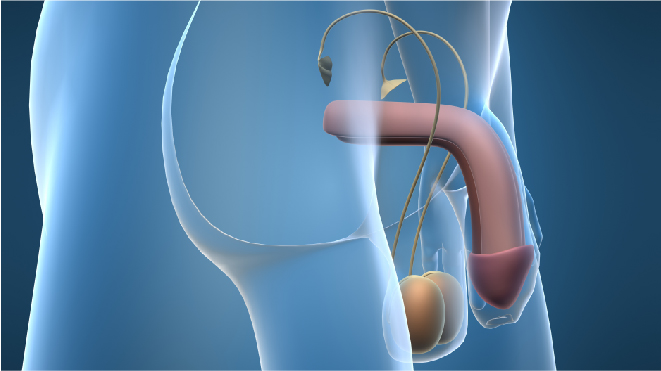Testicular cancer is the cancer in the testicles, the male reproductive organ that makes hormones and sperm. Learn more about testicular cancer here

Different patients might have different types of testicular cancer and the patients may not show the same symptoms for the same type of cancer too. Depending on the type of cell the cancer has started in, the type of cancer can be determined. The common testicular cancers can be broadly classified into two types- seminoma and non-seminoma.
Both the cancers develop from the germ cells that are responsible for the production of sperm in the testicles, which is why testicular cancers are also known as germ cell tumours. The following are the types of testicular cancers:
Seminoma:
Germ cell tumour present in the testicles lead to seminomas, type of testicular cancer that is one of the most curable ones. In very rare cases, they are present in the mediastinum or other extra-gonadal locations. It is often observed in men of ages of 30 years to 50 years, testes pain and lower back ache are the most reported symptoms of seminoma.
About 90% of the seminomas produce masses that are easily detectable during diagnostic tests. Patients with a medical history of cryptorchidism (undescended testicles) are at 10% to 40% higher risk of developing testicular cancer.
There are two main subtypes of seminomas:
Classical seminomas:
These are the most common seminomas. Almost half of the germ cell tumours are classical seminomas. Classical or typical seminomas are generally slow growing and non-metastasized cancers.
Spermatocytic seminomas:
This a very rare form of cancer that is observed in men who is older than 55 years. This cancer is confined to the testis with the clinicopathologic features different from classical seminomas.
Treatment: Seminomas are often treated by removing one or both testicles. This, however does not affect the fertility and sexual activities of the person if only one testicle is removed. Chemotherapy and radiotherapy are also used for treating spermatocytic seminomas. Read more about the treatment options for testicular cancer here.
Survival rate: Seminomas being one of the most treatable cancers, have a 95% survival rate, if identified in the early stages.
Non-seminoma:
Non-seminoma is the type of testicular cancer caused due to tumours in the germ cells but is a more metastasizing type of cancer than the seminomas. They grow quickly and spread beyond the testicles. These tumours tend to occur in the teens and early 40s age groups.
Depending on the type of cells the non-seminoma tumours are made up of, there are 4 main subtypes of non-seminoma cancers:
Teratoma:
These cancers are caused due to the tumours in the germ cells of the testicles. These tumours are made up of different tissues such as muscle, hair or bones. These are of two types- mature and immature teratomas. The mature teratomas are dermoid cysts, which are benign, while the immature ones are cancerous. Teratoma symptoms include minimal and painless lumps and can often be treated by surgery or chemotherapy.
Yolk sac tumor:
These are also known as endodermal sinus tumors that represent the yolk sac, allantois, and extraembryonic mesenchyme. Pure yolk sac tumour (YST) is one of the most common testicular cancers in prepubertal males. Pure YST occupies 80% of the testicular cancers for the ages 1-2 years. While in 40-50% cases of testicular cancer in adults of the age 25-30, YST is a component of combination nonseminomatous germ cell tumours. YST in children is present as painless bulky testicular tumours.
Choriocarcinoma:
Choriocarcinoma is germ cell tumours which metastasizes via hematogenous routes to the lung, liver, brain and other organs. Like other nonseminoma cancers, choriocarcinoma also occurs generally in young men. These cancers respond poorly to radiation therapy and chemotherapy, having a high mortality rate.
Embryonal carcinoma:
This is a type of germ cell tumours, which is present in both pure form or as a component of mixed germ cell tumours. It occupies 3-10% of pure germ cell tumours. In 80% of mixed germ cell tumours, embryonal carcinoma is a component. It is commonly found in men of ages 20-30.
These tumours are characterized primitive epithelial cells with marked pleomorphism and distinct histologic patterns.
Combined tumours:
Some tumours are a combination of two or more germ cell tumours. They are often diagnosed and treated like nonseminoma. Read about diagnosis of testicular cancer here
Rare forms of testicular cancer:
Lymphoma:
When the cancer has spread to the lymph nodes, it is known as lymphoma. It is often observed in men older than 50 years.
Mesothelioma:
This type of testicular cancer develops in the cells that are present in the covering layers of the body. This a very rare form of testicular cancer.
Stromal tumours:
These tumours are also known as gonadal stromal tumors. These tumours develop in the stromal cells which are responsible for the production of testosterone. They are not always cancerous, and are different from germ cell tumours. Stromal tumours do not respond to regular cancer therapies.



